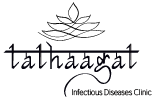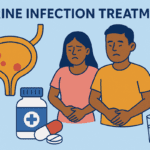
Hospital-acquired infections (HAIs), also known as nosocomial infections, are infections that patients develop during their stay in a healthcare facility, such as a hospital or nursing home, which were not present at the time of admission. These infections can lead to serious health complications, prolonged hospital stays, increased healthcare costs, and, in some cases, even death. Understanding the causes, types, treatment, and prevention of HAIs is crucial to ensuring patient safety and improving healthcare outcomes.
Causes of Hospital-Acquired Infections
HAIs occur due to various factors, including poor hygiene, invasive procedures, and the presence of antibiotic-resistant bacteria. The key causes include:
- Bacterial Contamination: Bacteria such as Staphylococcus aureus, Pseudomonas aeruginosa, Escherichia coli, and Klebsiella pneumoniae are common culprits behind HAIs. These bacteria can spread through contact with contaminated surfaces, medical instruments, or healthcare workers.
- Weakened Immune System: Patients in hospitals often have weakened immune systems due to illness, surgery, or medical treatments like chemotherapy, making them more vulnerable to infections.
- Invasive Medical Procedures: The use of catheters, ventilators, surgical instruments, and intravenous lines increases the risk of HAIs. These devices can introduce bacteria into the body if not properly sterilized.
- Improper Hand Hygiene: Healthcare workers who do not follow strict hand hygiene protocols can unknowingly transmit bacteria from one patient to another.
- Overuse of Antibiotics: The excessive use of antibiotics can lead to antibiotic resistance, making it harder to treat infections when they occur.
- Poor Hospital Environment: Contaminated air, unclean surfaces, and overcrowding can contribute to the spread of HAIs in healthcare facilities.
Types of Hospital-Acquired Infections
There are several types of HAIs, with some being more common than others. The most prevalent types include:
- Urinary Tract Infections (UTIs):
- Often caused by catheter use.
- Symptoms include frequent urination, burning sensation, fever, and cloudy urine.
- Common pathogens: E. coli, Klebsiella, Pseudomonas.
- Surgical Site Infections (SSIs):
- Occur at the site of a surgical incision.
- Symptoms include redness, swelling, pain, and pus formation.
- Common pathogens: Staphylococcus aureus, Gram negative bacteria.
- Pneumonia:
- Often associated with ventilators (ventilator-associated pneumonia or VAP).
- Symptoms include cough, fever, shortness of breath, and chest pain.
- Common pathogens: Pseudomonas aeruginosa, Acinetobacter, Streptococcus pneumoniae.
- Bloodstream Infections (BSIs):
- Also known as sepsis, it can occur due to contaminated intravenous lines or catheters.
- Symptoms include fever, chills, rapid heartbeat, and low blood pressure.
- Common pathogens: Staphylococcus aureus, Candida, Enterobacteriacae.
- Clostridioides difficile Infection (C. diff):
- A severe diarrheal infection caused by overuse of antibiotics.
- Symptoms include severe diarrhea, abdominal pain, and fever.
- Caused by Clostridioides difficile bacteria.
Treatment of Hospital-Acquired Infections
Treatment of HAIs depends on the type of infection and the causative pathogen. Some common treatment approaches include:
- Antibiotic Therapy:
- Bacterial infections are treated with targeted antibiotics. However, antibiotic resistance has become a growing challenge in treating HAIs.
- Doctors often conduct culture and sensitivity tests to determine the most effective antibiotic.
- Antifungal and Antiviral Medications:
- In cases of fungal infections (e.g., Candida infections), antifungal drugs such as fluconazole, echinocandins etc are prescribed.
- Viral infections may require antiviral medications, depending on the virus involved.
- Supportive Care:
- Oxygen therapy, intravenous fluids, and pain management may be required for patients with severe HAIs.
- In cases of sepsis, intensive care and vasopressor medications may be needed to stabilize blood pressure.
- Surgical Interventions:
- Infected surgical wounds may require drainage or debridement to remove infected tissue.
- In severe cases, removal of infected medical devices (e.g., catheters, ventilators) may be necessary.
Prevention of Hospital-Acquired Infections
Prevention is the most effective way to combat HAIs. Healthcare facilities must implement strict infection control protocols to reduce the risk of infections. Key preventive measures include:
- Hand Hygiene:
- Regular handwashing with soap and water or alcohol-based hand sanitizers is the most effective way to prevent HAIs.
- Healthcare workers must follow the WHO’s “Five Moments for Hand Hygiene.”
- Sterilization and Disinfection:
- Proper sterilization of medical instruments, surgical tools, and hospital surfaces is essential to prevent contamination.
- High-touch surfaces like bed rails, doorknobs, and medical equipment should be disinfected frequently.
- Proper Use of Medical Devices:
- Catheters, ventilators, and intravenous lines should be used only when necessary and removed as soon as possible.
- Strict aseptic techniques should be followed when inserting and maintaining these devices.
- Antibiotic Stewardship:
- Avoiding the overuse and misuse of antibiotics can help reduce antibiotic resistance.
- Hospitals should have antibiotic stewardship programs to guide appropriate antibiotic use.
- Isolation Precautions:
- Patients with highly contagious infections should be isolated to prevent the spread of pathogens.
- Healthcare workers should use personal protective equipment (PPE) such as gloves, masks, and gowns when handling infected patients.
- Vaccination:
- Healthcare workers and patients should be vaccinated against preventable diseases such as influenza and pneumococcal infections.
- Vaccination reduces the risk of outbreaks in healthcare settings.
- Education and Training:
- Continuous training for healthcare workers on infection control practices is crucial.
- Patients and their families should also be educated on hygiene practices to prevent infections.
Hospital-acquired infections threaten patient safety and public health. Understanding their causes, types, treatment, and prevention is crucial. Strict infection control, hand hygiene, and responsible antibiotic use can reduce HAIs, saving lives and lowering healthcare costs. A collective effort from healthcare professionals, patients, and policymakers is essential to combat this challenge effectively.
To book an appointment with an infectious diseases specialist, contact Tathaagat Infectious Diseases Clinic at 9664630466.
Take a step towards better health and infection prevention today!






